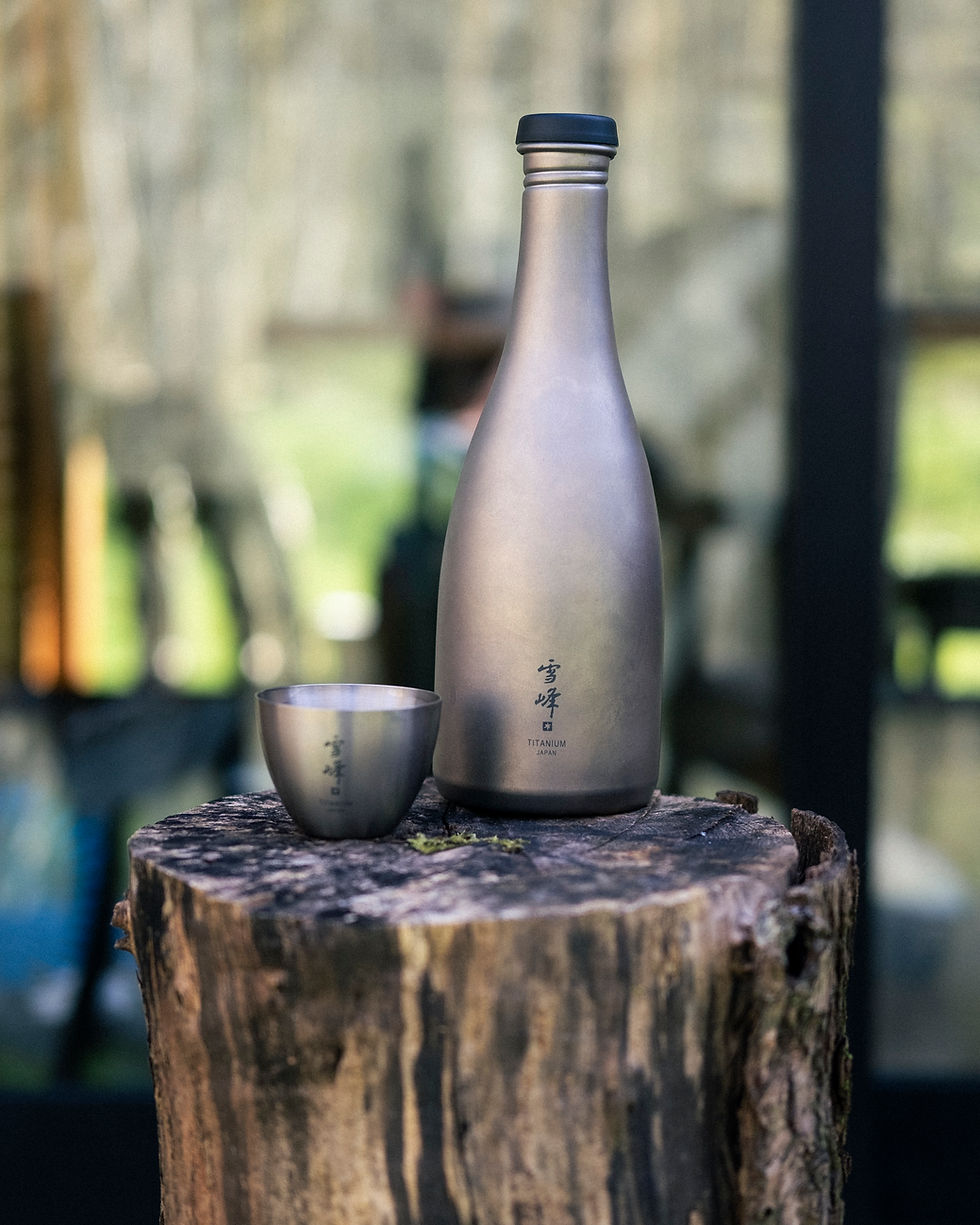Gear Review: The Titanium Snow Peak Sake Carafe & Cups
- 4x4ward
- May 13, 2021
- 4 min read
"Buy once cry once", the adage goes. You'll spend more money up front but in theory will never need to deal with it again. It holds pretty true, even to this day, and is best put in to context with Terry Pratchett's 1993 "Boots Theory" from his novel Men at Arms:
"Take boots, for example. He earned thirty-eight dollars a month plus allowances. A really good pair of leather boots cost fifty dollars. But an affordable pair of boots, which were sort of OK for a season or two and then leaked like hell when the cardboard gave out, cost about ten dollars. Those were the kind of boots Vimes always bought, and wore until the soles were so thin that he could tell where he was in Ankh-Morpork on a foggy night by the feel of the cobbles.
But the thing was that good boots lasted for years and years. A man who could afford fifty dollars had a pair of boots that'd still be keeping his feet dry in ten years' time, while the poor man who could only afford cheap boots would have spent a hundred dollars on boots in the same time and would still have wet feet."
But this quote misses opulence, and views purchases through a lens of pure function neglecting form or how we interact with those products. If someone is running a lot during their day, a heavy expensive boot may actually perform worse in the long run, or lead to other issues such as knee and back problems. And that is something I actually concern myself with.
While not an ultralight hiker, I do care about weight when heading outdoors. Even when car camping I'll generally try and find ways to reduce weight overall. So an ultra-light decanter seems like a perfect fit right?

The answer is a strong: if it wasn't so damn expensive. Before talking about how it works/feels, the enormously oversized elephant in the room is how expensive this damn setup is. I got two titanium sake cups with the set, for a total of $250. And that doesn't include the now discontinued and rare neoprene case for it all, which would bump it up another $100 or so if you can find one.
Beyond the cost, there's no skirting around that it is a nice piece. Snow Peak Titanium products have always been high quality. It's a material they've been working with for decades, when titanium backpacking equipment was an abnormality. Even in the mid 90s I remember holding my first titanium cup on a trip with my dad, and being absolutely gobsmacked at how light this material is.
It is a single layer design. In laymen's terms that means it's uninsulated, and is a common structure for titanium pieces. You can see this in the design of the carafe, with the screw cap threads visible and the edge rolled under. Snow peak touts this as a feature, saying you can toss it in to a river stream to chill your sake (or whatever liquid you put inside). It's a good plan if you're close to a stream and want your drink chilled, and this ideal state carries over in to the double walled cups. Sake stays in the stream chilled, sake in your cup is insulated from the heat of your hand. But things never work out as planned, and the lack of insulation can prove frustrating if you're in a hot or freezing cold area.

The devil is in the details though, and as usual that is where Snow Peak shines. Both carafe and cup hold well in the hand - feeling nicer than carrying around a flask while also being easier to fill and pour. It also makes it much easier to clean the inside, with a typical bottle brush being able to get in to the corners of the base. Up top the screw on cap has a rubber gasket, creating a spill-proof seal that has kept the various bags I've tossed this in to nice and dry.

With the finished edge on the cup, drinking experience is enjoyable. Despite the seemingly hard edge you're not going to accidentally nick yourself on it. Looking closely you'll also realize that the interior and exterior shapes are offset. While the exterior and silhouette of the cup is a smooth line, the interior cuts in towards the bottom. Giving you the correct serving size while not requiring an awkward grip.
Both pieces feature a screen printed Snow Peak logo, which surprised me at first. Past experiences with Snow Peak titanium that feature screen printed designs has lead me to believe they're not the most durable if used regularly. I would have liked to see a laser etching or something that will stand the test of time a little better.
Yet we land in the same place we started, asking if details are enough to compensate for the high cost. Yes its single layer for easy chilling, but so are aluminum cans of Sake you can buy at most liquor stores. Yes it's titanium so it's lightweight, but so are aluminum cans. Yes it's easy to drink from the cups, but aluminum cans are easy to drink from as well. And you can buy 50-100 cans of sake (depending on the brand) for the price of this set.
And that's the hard part for me. Is the experience of a high end titanium carafe better than sharing drinks around a campfire with friends many times over? I don't think so. But there's still no denying this thing is damn cool.

Comentários